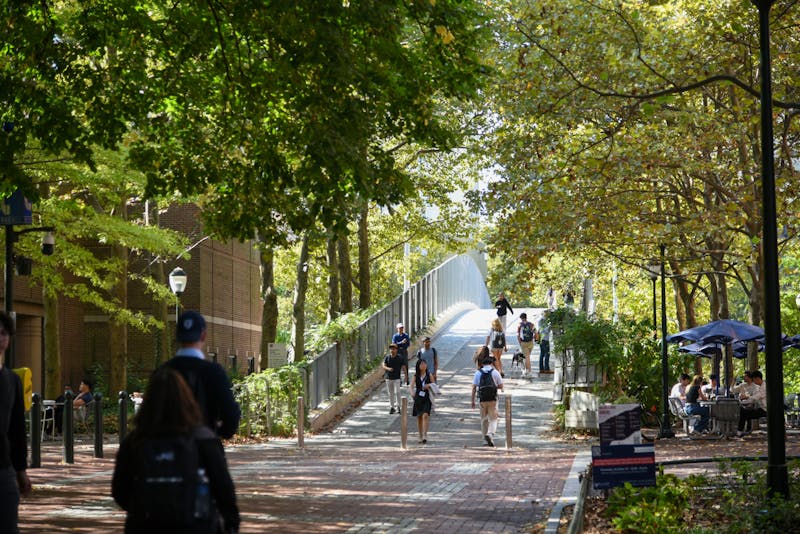This year, 12.1 percent of total applicants were admitted to the Class of 2017, a slight decrease from last year’s 12.3 percent, marking a record low for Penn.
The admit rate for regular decision applicants was 9.4 percent. In addition, the total applicant pool size was 31,280, up from 31,218 last year, according to the Office of Admissions.
According to Dean of Admissions Eric Furda, the most significant change in the applicant pool compared to last year’s was the average SAT score of the 3,785 admitted students, increasing 12 points from 2186 to 2198.

“I think this year, even though the applicant pool stayed … basically flat with a small increase, at least [in terms of] testing, the applicant pool grew at the highest SAT scores,” Furda said, noting that the pool was “deeper at the top.”
Beyond that, Furda also mentioned that another big change has been the increasing size of the School of Engineering applicant pool, which has doubled over the past few admissions cycles.
Furda credits this to the increased interest of students and their families in the science, technology, engineering and mathematics fields. “[They’re] applying to programs where they see jobs, to be blunt,” he said.
Sally Rubenstone, senior advisor at College Confidential, agrees with Furda on that point.
“One thing that I found was true over the last couple years is that when I’ve talked to students, certainly they’re interested in your peer schools like Harvard, Yale and Princeton,” Rubenstone said, “but I really see Penn coming up in the world…”
Rachel Rubin, founder and chief consultant of Spark Admissions, agrees that the economy has influenced applications to Penn and its peer schools.
“Obviously the economy continues to do pretty poorly…and high school students are well aware of that because their parents know about this,” Rubin said,“so they feel like it’s very essential for them to be applying and going to one of the nation’s top schools like Penn.”
In terms of the geographic breakdown of the admitted students, Furda said, “We didn’t have as much of an increase as we’ve been seeing in the South over the last few years.” The Office of Admissions has concentrated its recruitment efforts in the area over the past year.
However, Furda mentioned that other regions have had a “huge growth,” including the states of Florida, Texas and Maryland.

Outside of the United States, Penn has also seen increased representation in the Middle East and South America, and particularly in Mexico, according to Furda.

Out of this year’s overall admitted pool, 43 percent are self-reported members of a racial and ethnic minority. In the domestic pool, 53 percent are self-reported — a rise from last year’s 52 percent.
Furda said that “minority numbers continue to grow,” but that things could change in light of the upcoming Fisher v. Texas Supreme Court ruling, which would decide on the legality of affirmative action in college admissions. If the court rules against affirmative action, Furda thinks these numbers would change.

Furda also notes that socioeconomic diversity of the prospective class has continued to grow over the last five years, due to “demographic changes in the country [and] 2008 and everything that did in terms of employment in the country,” as well as Penn’s partnerships with outside organizations like the Knowledge is Power Program, Questbridge and Posse that work to identify students with talents from different backgrounds.
Furda stressed the competitiveness of the applicant pool this year, as in years past. “To get that packet is really us saying we recognize what you’ve done and we recognize the impact you’re going to have on Penn,” he said.
This year, 2,800 students — or 11 percent of the regular decision applicant pool — are on the waitlist.
The students on the waitlist and the students who were denied aren’t “second class citizens,” he continued. “We have a fixed class size. That’s a reflection of the capacity we have as a school.”
Mark Paraskevas, a senior at Garden School in Jackson Heights, N.Y, who found out he was admitted to Penn via Regular Decision at 5 p.m. tonight on the Penn Admissions portal was “very excited” when he saw his decision.
“It was my worst interview so I was a little worried,” Paraskevas said. “The process isn’t over yet, but I’m very happy and it seems likely that I’ll end up there.”


The Daily Pennsylvanian is an independent, student-run newspaper. Please consider making a donation to support the coverage that shapes the University. Your generosity ensures a future of strong journalism at Penn.
DonatePlease note All comments are eligible for publication in The Daily Pennsylvanian.







